When I decided to renovate my kitchen, I wanted cabinets that screamed quality, style, and durability without breaking the bank. After months of research, measuring, and agonizing over options, I landed on Schuler Cabinets, and let me tell you—I’m sold.
Available exclusively at Lowe’s, these cabinets blend timeless craftsmanship with modern flair, making them a standout choice for anyone looking to transform their kitchen. Whether you’re a DIY enthusiast or working with a designer, Schuler’s got the customization and quality to make your space shine.
Trust me, you’ll want these in your home.
My Experience With Schuler Cabinets
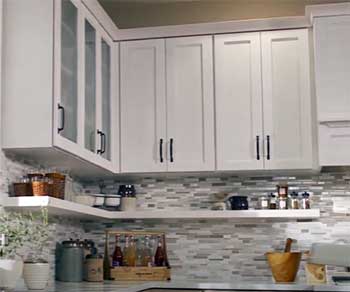
Picture this: my kitchen was stuck in the 1980s—dingy oak cabinets, creaky hinges, and drawers that fought me every time I reached for a spatula.
I knew a remodel was overdue, but I wasn’t sure where to start.
I spent hours scrolling through reviews, visiting showrooms, and sketching layouts.
When I stumbled across Schuler Cabinets at Lowe’s, I was intrigued by their reputation for blending European-inspired design with American-made durability. I decided to take the plunge, and I’m so glad I did.
The process started with a consultation at Lowe’s, where a designer helped me map out my kitchen. I chose Schuler’s New Haven door style in a warm maple finish with a sable glaze for the perimeter and a bold Peppered Appaloosa for the island.
The customization options blew me away—hundreds of door styles, finishes, and hardware choices let me craft a kitchen that felt uniquely mine. Ordering was straightforward, though I had to wait about 10 weeks for delivery, which was a bit longer than I’d hoped but not unexpected for semi-custom cabinets.
Installation was where things got real. I hired a local contractor, and watching those cabinets go up was like seeing my Pinterest board come to life. The cabinets arrived well-packaged, with no visible scratches or dings, and the plywood construction felt sturdy as heck.
I remember running my hand over the smooth, high-gloss finish and thinking, “These are going to last.” Three months in, my kitchen feels like a showroom—functional, gorgeous, and worth every penny.
The soft-close hinges and full-extension drawers make cooking a breeze, and I’m constantly getting compliments from friends. My only hiccup? One drawer slide was slightly misaligned, but a quick call to Lowe’s got it fixed within a week.
That experience set the tone for my love affair with Schuler. It wasn’t just about the cabinets themselves—it was the whole package: the design process, the quality, and the way they transformed my daily routine.
I felt like I was cooking in a professional kitchen, and honestly, it made me want to cook more. But let’s break down what makes Schuler so special, and where they might not be the perfect fit for everyone.
Pros of Schuler Cabinets
- Unmatched Customization Options
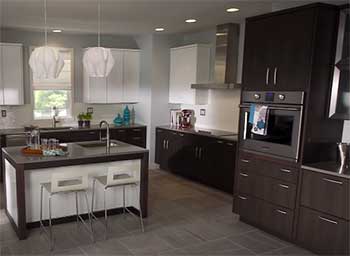
You know that feeling when you walk into a kitchen that feels like it was made just for you?
That’s what Schuler delivers.
With thousands of combinations—door styles, wood species, finishes, and hardware—you can create a look that’s as unique as your cooking style.
I went for a mix of maple and high-gloss laminate, but you could go sleek and modern with frameless designs or classic with raised-panel doors. Whatever your vibe, Schuler’s got you covered. I spent hours flipping through their catalog, and it was like being a kid in a candy store—except the candy was cabinet doors.
- Top-Notch Build Quality
I’m no carpenter, but I can tell when something’s built to last. Schuler cabinets are crafted with plywood boxes and solid wood or high-quality veneer doors, depending on the line. Unlike the particleboard nightmares I’ve seen in budget brands, these cabinets feel like they could survive a tornado.
The dovetail joints in the drawers and the Blum hardware—think soft-close hinges and full-extension guides—are the kind of details that make you appreciate the craftsmanship every time you open a cabinet. I’ve got heavy pots and pans stacked in mine, and they don’t even flinch.
- Eco-Friendly Materials
If you’re like me and care about the planet, you’ll appreciate Schuler’s commitment to sustainability. They use low-VOC finishes and source materials responsibly, which means you’re not just upgrading your kitchen—you’re doing it with a clear conscience.
I felt good knowing my cabinets weren’t contributing to a landfill’s worth of waste. It’s a small thing, but it matters when you’re trying to make choices that align with your values.
- Stylish European-Inspired Designs
Schuler’s designs lean into that sleek, European aesthetic without sacrificing functionality. My New Haven cabinets have clean lines and a polished look that make my kitchen feel like it belongs in a design magazine.
Whether you’re into minimalist vibes or something more ornate, Schuler’s range has something that’ll catch your eye and elevate your space. I’ve had friends ask if I hired a high-end designer, and I just smile and say, “Nope, just Schuler.”
- Reliable Warranty
Nothing says “we stand by our product” like a solid warranty. Schuler offers a limited lifetime warranty, which gave me peace of mind knowing that if anything went wrong—like that one wonky drawer slide—I wouldn’t be left high and dry.
It’s the kind of assurance that makes investing in premium cabinets feel like a no-brainer. I haven’t had to use it much, but knowing it’s there makes me sleep better at night.
- Seamless Integration with Lowe’s
Since Schuler is exclusive to Lowe’s, the buying process feels like a one-stop shop. The staff at my local Lowe’s were knowledgeable, and the design consultation made planning a breeze.
You can sit down with someone who knows the product inside and out, and they’ll help you avoid rookie mistakes—like ordering a cabinet that’s too big for your corner space. It’s not something every brand offers, and it made my remodel less stressful.
Not-So-Good Parts of Schuler Cabinets
- Higher Price Point
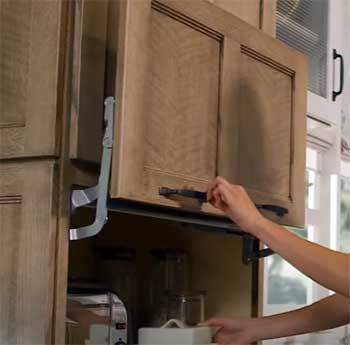
Let’s be real—Schuler cabinets aren’t cheap.
My kitchen, which is about 10×12 feet, cost me around $12,000, including installation.
Compared to budget options like IKEA or RTA brands, Schuler’s price tag can sting, especially if you’re on a tight budget.
I justified it by reminding myself that quality cabinets are a long-term investment, but it’s something you’ll need to weigh if your wallet’s feeling light.
You’re paying for premium materials and craftsmanship, but it’s still a chunk of change.
- Limited Availability
Here’s a bummer: Schuler cabinets are only available at Lowe’s. If you don’t have a Lowe’s nearby or prefer shopping around at multiple retailers, you’re out of luck.
I was fine with it since I have a Lowe’s 15 minutes from my house, but I can see how this could be a hassle for some folks, especially in rural areas. It’s not like you can pop into Home Depot or a local cabinet shop to compare options in person.
- Longer Lead Times
Patience isn’t my strong suit, and waiting 10 weeks for my cabinets tested me. While I get that semi-custom cabinets take time to craft, the lead time was longer than some competitors, like stock cabinets that can arrive in a week or two.
If you’re in a rush to get your kitchen done, you might find the wait frustrating. I used the time to prep my space, but it’s worth planning for if you’re on a tight timeline.
- Potential for Minor Quality Control Issues
While my cabinets were mostly flawless, that one misaligned drawer slide reminded me that no brand is perfect. I’ve read reviews from others who mentioned occasional issues like scratches on high-gloss finishes or incorrect sizes being shipped.
These seem rare, but they happen, so it’s worth double-checking your order when it arrives. My contractor caught the issue early, but it’s something to keep an eye on during installation.
- Installation Requires Skill
Schuler cabinets are sturdy, but they’re not lightweight. Installing them isn’t a casual weekend project unless you’re a seasoned DIYer. I hired a pro, and even he said the heavy plywood boxes and precise alignments required extra care.
If you go with a less experienced installer, you might end up with wonky doors or uneven gaps. It’s not Schuler’s fault, but it’s a factor to consider when budgeting for the project.
Maintenance Tips For Schuler Cabinets
- Regular Cleaning Keeps Them Gleaming
To keep your Schuler cabinets looking as good as the day they were installed, you’ve got to clean them regularly. I use a soft, damp cloth with a mild dish soap solution—nothing fancy—to wipe down surfaces every couple of weeks.
Avoid harsh chemicals or abrasive sponges; they can dull the finish faster than you can say “kitchen remodel.” For stubborn grease spots, a little vinegar mixed with water does the trick without harming the low-VOC finish. It takes five minutes and keeps your cabinets sparkling.
- Protect High-Gloss Finishes
If you went for a high-gloss look like I did, be extra careful. These finishes are stunning but can show fingerprints and scratches if you’re not mindful. I keep a microfiber cloth handy for quick touch-ups and avoid dragging heavy appliances across the cabinet doors.
Schuler’s protective film during shipping helps, but once it’s off, it’s on you to keep those surfaces pristine. I learned to be gentle after a close call with a mixer that left a tiny mark—lesson learned.
- Check and Tighten Hardware
Those soft-close hinges and drawer slides are a dream, but they can loosen over time with heavy use. Every six months, I grab a screwdriver and check the screws on the hinges and guides. A quick tighten keeps everything moving smoothly.
If you notice a drawer sticking, don’t force it—check the alignment or call Lowe’s for a replacement part under the warranty. It’s a small task that saves you from bigger headaches down the road.
- Avoid Excess Moisture
Wood and water don’t mix, even with Schuler’s durable construction. I learned this the hard way when a leaky dishwasher left a small warp on a base cabinet. Now, I’m religious about wiping up spills immediately and using a dehumidifier in my humid climate.
If you live in a damp area, consider adding silica gel packets inside cabinets to absorb moisture. It’s a cheap trick that protects your investment without much effort.
- Polish for Extra Shine
For stained cabinets like my maple ones, a furniture polish can work wonders. I apply a non-silicone polish every few months to enhance the wood’s natural glow and protect the finish. Just make sure to test it on a small area first to avoid any surprises.
High-gloss or painted cabinets don’t need this step, but a quick buff with a dry cloth keeps them sparkling. It’s like giving your cabinets a spa day—they deserve it.
- Handle with Care
Schuler’s cabinets are tough, but they’re not indestructible. I’ve got a bad habit of slamming drawers when I’m in a rush, and I’ve noticed it can stress the slides over time.
Be gentle when closing doors and drawers to preserve the soft-close mechanisms. Also, avoid overloading shelves with super heavy items—spread the weight out to keep the shelves from sagging. A little mindfulness goes a long way in keeping your cabinets in top shape.
Comparison of Schuler Cabinets With Other Brands
I didn’t choose Schuler on a whim—I shopped around, compared options, and weighed what mattered most for my kitchen.
Here’s how Schuler stacks up against Bellmont Cabinets, Cubitac Cabinets, and KraftMaid, focusing on key factors like quality, cost, customization, and availability. Let’s break it down so you can decide which brand fits your remodel best.
- Schuler Vs. Bellmont Cabinets

Bellmont Cabinets caught my eye with their sleek, frameless designs and eco-conscious approach, much like Schuler.
Both brands use plywood construction and high-quality hardware, but Bellmont leans harder into modern, European-style aesthetics with a focus on minimalism.
I loved their clean, handle-less doors, but their customization options felt slightly more limited than Schuler’s vast catalog of door styles and finishes.
Price-wise, Bellmont is in the same ballpark—my 10×12 kitchen would’ve cost around $11,000 to $13,000—but they’re available through independent dealers, which could be a plus if you don’t have a Lowe’s nearby.
Schuler’s exclusive Lowe’s partnership made the buying process smoother for me, and their limited lifetime warranty felt more reassuring than Bellmont’s five-year coverage. If you’re after a hyper-modern look and have access to a dealer, Bellmont’s a strong contender, but Schuler’s versatility won me over.
- Schuler Vs. Cubitac Cabinets
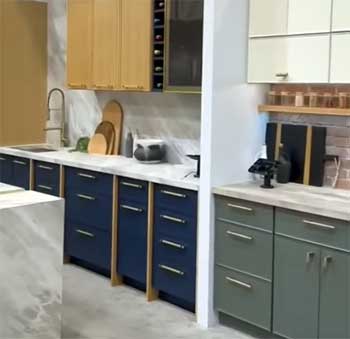
Cubitac Cabinets are a budget-friendly RTA option that surprised me with their quality for the price.
Like Schuler, they use plywood boxes and solid wood doors, but their finishes and hardware don’t quite match Schuler’s premium Blum components.
I checked out Cubitac’s Milan line, and while the modern vibe was cool, their style range is narrower—think contemporary with fewer traditional options.
Cost was a big draw: Cubitac could’ve saved me about 30%, coming in around $8,000 for my kitchen.
The trade-off?
Assembly is on you, and I wasn’t ready to spend my weekends wrestling with flat-pack boxes. Schuler’s ready-to-install cabinets and wider design variety felt worth the extra cost, especially for a high-use kitchen like mine. If you’re handy and want to save, Cubitac’s a solid pick, but Schuler’s polish and durability tipped the scale.
- Schuler Vs. KraftMaid
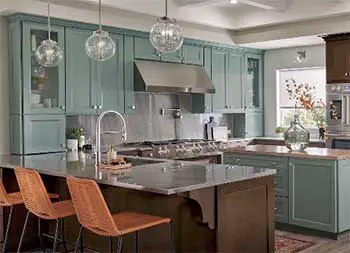
KraftMaid was my toughest call.
They’re also American-made, with a reputation for quality that rivals Schuler.
Both use plywood construction and offer extensive customization, but KraftMaid’s wood species selection—like cherry and walnut—gave them a slight edge for traditionalists.
My kitchen with KraftMaid would’ve cost $13,000 to $15,000, a bit pricier than Schuler’s $12,000. KraftMaid’s finishes are stunning, but I found Schuler’s European-inspired designs, like my New Haven doors, a touch more refined for my modern-leaning taste.
KraftMaid is available through multiple retailers, unlike Schuler’s Lowe’s exclusivity, which could be a pro or con depending on your shopping habits. Both offer solid warranties, but Schuler’s eco-friendly materials and seamless Lowe’s integration made it feel like the better fit for me.
If you’re after classic wood tones, KraftMaid might sway you, but Schuler’s balance of style and value sealed the deal.
Frequently Asked Questions (FAQ)
Schuler cabinets are top-tier in terms of quality. They’re built with plywood boxes, solid wood or high-quality veneer doors, and premium Blum hardware like soft-close hinges and full-extension drawer guides. The craftsmanship is evident in the sturdy construction and flawless finishes, making them a durable choice for any kitchen. While minor quality control issues like misaligned slides can happen, their limited lifetime warranty ensures quick fixes. I’ve had mine for months, and they still feel as solid as day one.
Schuler Cabinetry is manufactured by MasterBrand Cabinets, Inc., based in Waconia, Minnesota. They’re an American company known for producing high-quality, semi-custom cabinets exclusively sold through Lowe’s. Their focus on sustainable materials and innovative construction techniques sets them apart in the industry. Knowing they’re made in the USA gave me extra confidence in their reliability.
Yes, Schuler cabinets are made with a combination of real wood and high-quality veneers, depending on the specific line and finish. The cabinet boxes are constructed from plywood, and doors are typically solid wood or veneered over a solid core, ensuring durability and a premium look. Always check the specific product line for details, as some finishes may use engineered materials. My maple cabinets feel like the real deal, with a rich, natural grain.
It’s tough to crown one brand as the absolute best, as it depends on your needs. Schuler and Kraftmaid are neck-and-neck for semi-custom cabinets, offering superior plywood construction, extensive customization, and reliable warranties. For ultra-high-end, custom brands like Wood-Mode or local cabinetmakers might take the lead, but they come with a steeper price. Schuler’s balance of quality, style, and value makes it a top contender for most homeowners like me.
Wrapping It Up: Why Schuler Cabinets Are Worth It?
After living with my Schuler cabinets for months, I can confidently say they’re a game-changer. The blend of style, durability, and customization makes them a worthy investment for any kitchen remodel.
From the eco-friendly materials to the sleek designs, Schuler delivers a premium experience that’s hard to beat. If you want a kitchen that feels like a showroom and lasts for years, go for Schuler—you won’t regret it.
Head to Lowe’s and start designing your dream kitchen today.
